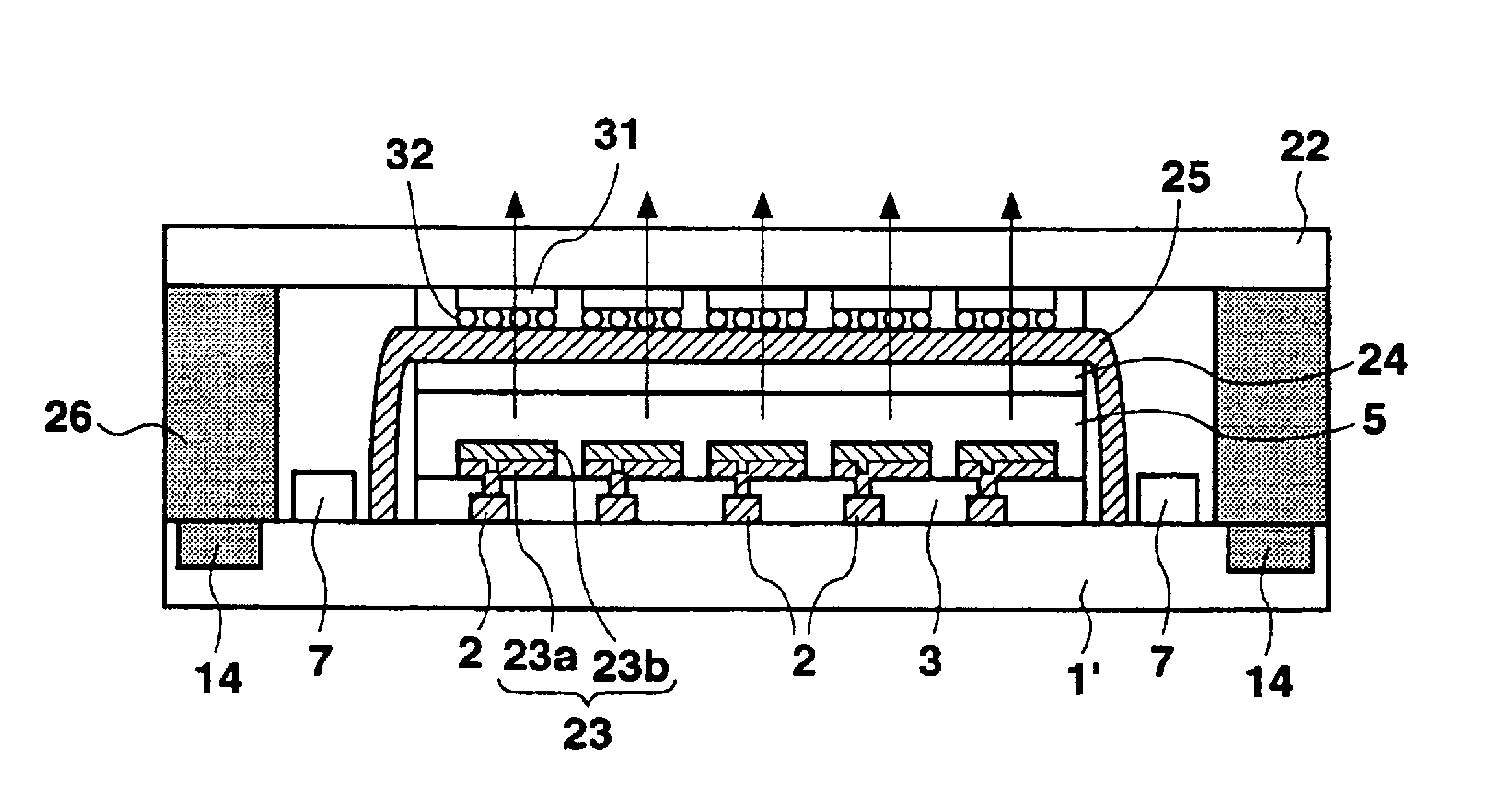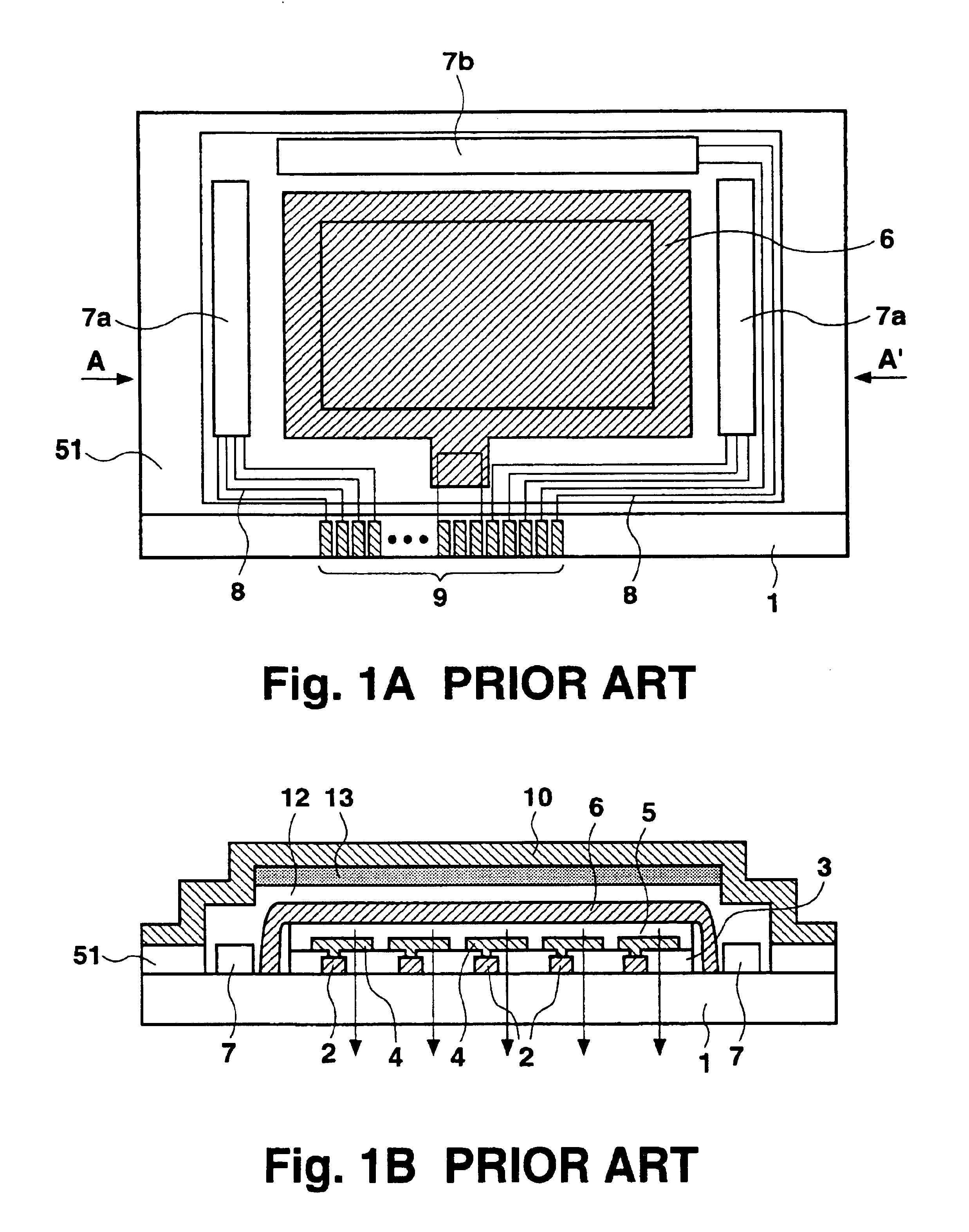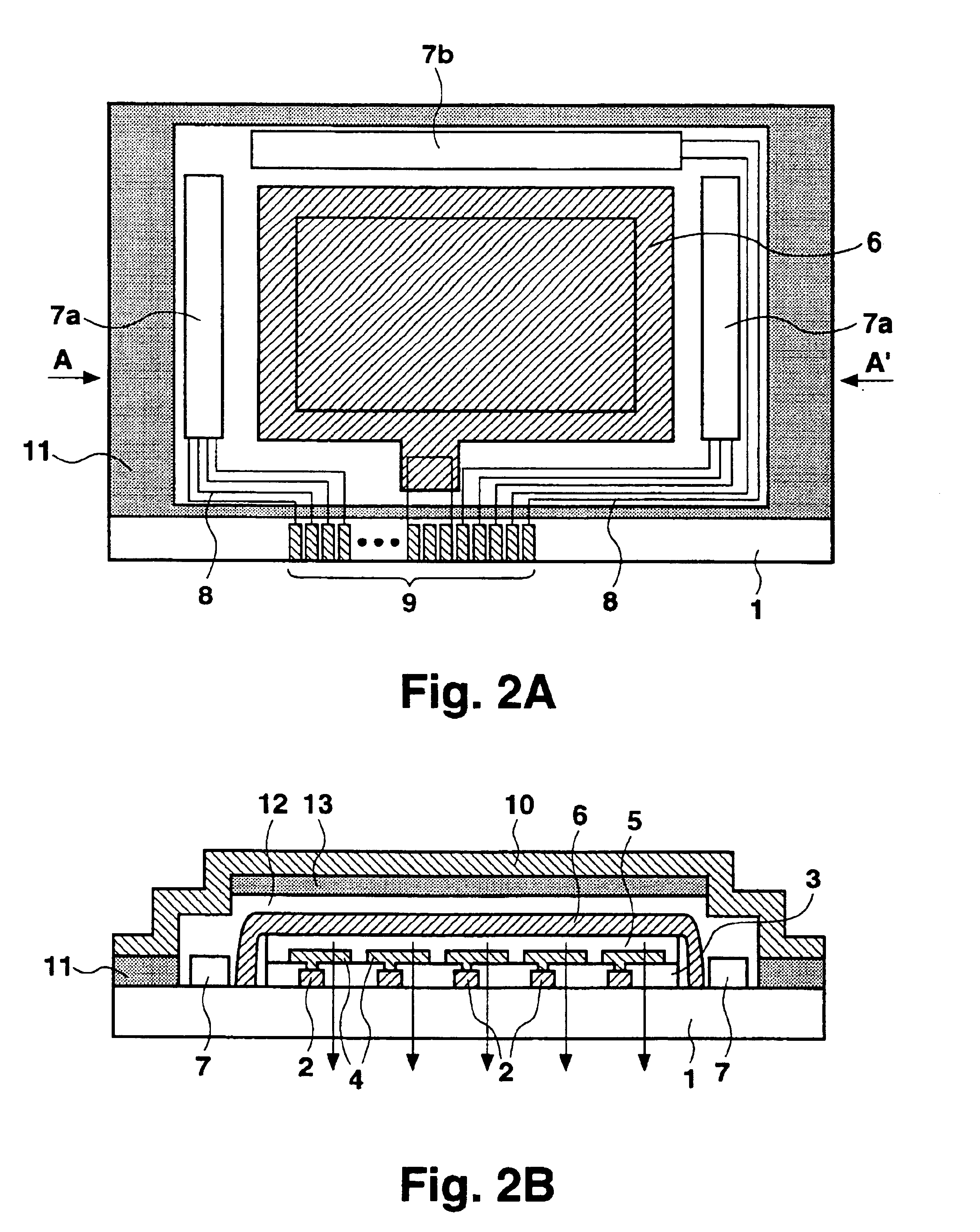Electroluminescence display device having a desiccant
a display device and desiccant technology, applied in the field of display, can solve the problems of moisture still inside the device, degradation of display quality,
- Summary
- Abstract
- Description
- Claims
- Application Information
AI Technical Summary
Benefits of technology
Problems solved by technology
Method used
Image
Examples
first embodiment
FIG. 2A is a plan view of an organic EL display device according to a first embodiment of the present invention, and FIG. 2B shows a cross-sectional view taken along line A--A' of FIG. 2A. Structures similar to those in the conventional device described earlier are labeled with the same reference numerals, and detailed explanation of those structures will not be repeated. Selective drive circuits 2 are disposed for respective pixels on a transparent substrate 1. A pixel electrode 4 is provided over each selective drive circuit 2 with a planarizing insulating film 3 interposed therebetween. An organic EL layer 5 and a counter electrode 6 are disposed covering those structures. The region including the selective drive circuits 2, planarizing insulating film 3, pixel electrodes 4, organic EL layer 5, and counter electrode 6 constitutes the display region. Arranged surrounding the pixel region are display driver circuits 7a, 7b for controlling emission / non-emission in each pixel to crea...
second embodiment
FIG. 3A is a plan view of an organic EL display device according to a second embodiment of the present invention. FIG. 3B shows a cross-sectional view taken along line A--A' of FIG. 3A. Structures similar to those described above in the first embodiment or earlier in the specification are labeled with the same reference numerals, and their detailed explanation will not be repeated.
The feature of the present embodiment is that a groove is formed in the transparent insulating substrate 1 in a portion under the seal 11, and a desiccant 14 is placed inside the groove.
As explained above, to prevent the seal 11 from flowing before hardening, a resin used for the seal 11 must have a certain degree of viscosity. This requirement for viscosity makes it difficult to uniformly mix the desiccant into the seal resin. In addition, the amount of desiccant to be mixed must be restricted to prevent loss of resin viscosity before curing. As the width of the seal 11 is also limited and cannot be made ...
third embodiment
FIG. 4 shows a cross-sectional view of an organic EL display device according to a third embodiment including color filters 21 as color components and having a first substrate 1' and a second substrate 22. Structures similar to those described above in the first or second embodiments or earlier in the specification are labeled with the same reference numerals, and their detailed explanation will not be repeated. In the present embodiment, differing from the first embodiment, light radiating from the organic EL layer 5 is emitted upward in the figure through a transparent counter electrode 25. The organic EL layer 5 emits white light from its entire surface. This light is emitted through the color filters 21 as lights having different colors to provide color indication.
The pixel electrode 23 is formed by a laminated structure comprising a lower layer 23a and an upper layer 23b. The lower layer 23a is made of a non-transparent conductive material such as molybdenum (Mo), and formed ov...
PUM
 Login to View More
Login to View More Abstract
Description
Claims
Application Information
 Login to View More
Login to View More - R&D
- Intellectual Property
- Life Sciences
- Materials
- Tech Scout
- Unparalleled Data Quality
- Higher Quality Content
- 60% Fewer Hallucinations
Browse by: Latest US Patents, China's latest patents, Technical Efficacy Thesaurus, Application Domain, Technology Topic, Popular Technical Reports.
© 2025 PatSnap. All rights reserved.Legal|Privacy policy|Modern Slavery Act Transparency Statement|Sitemap|About US| Contact US: help@patsnap.com



